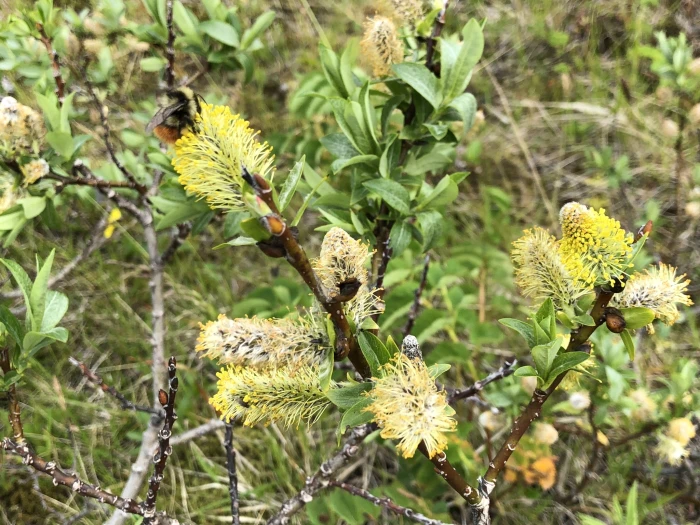Barclay’s Willow
(Salix barclayi)
Barclay’s Willow (Salix barclayi)
/
/

© Jason Grant
CC BY 4.0
Image By:
© Jason Grant
Recorded By:
Copyright:
CC BY 4.0
Copyright Notice:
Photo by: © Jason Grant | License Type: CC BY 4.0 | License URL: http://creativecommons.org/licenses/by/4.0/ | Uploader: jasonrgrant | Publisher: iNaturalist |

























Estimated Native Range
Climate Requirements for La Puente, California
| This Plant | Your Site | Plant Suitability for Your Location | ||
|---|---|---|---|---|
| • Precipitation | 6" - 151" | 16" | Your precipitation may be insufficient for this plant. Irrigate N" / year. | Irrigate N" / year |
| • High Temp. | 23°F - 89°F | 89°F | Your summer temperatures are normal for this plant. | Excellent |
| • Low Temp. | -30°F - 35°F | 43°F | OK, but your winter temperatures are warmer than normal for this plant | OK |
This plant should grow well at your location with about N inches per year (Y minutes per month) of irrigation.
Summary
Salix barclayi, commonly known as Barclay’s willow, is a deciduous shrub native to riparian zones, wetlands, and moist subalpine areas in the northwestern United States and western Canada. It typically grows near lakes, streams, and wet meadows at various elevations, often forming dense thickets. This willow can reach up to 8 feet in height and is characterized by its slender form, with elliptic to obovate leaves that are 1-2 inches long and 0.5-1 inch wide. The leaves are hairy when young, with persistent midrib hairs that become less prominent as the leaves mature. Barclay’s willow produces catkins that are short and leafy; the staminate (male) catkins are about 1 inch long, while the pistillate (female) catkins range from 1-2 inches long and are glabrous.
Barclay’s willow is valued for its rapid growth and adaptability to wet conditions, making it suitable for erosion control and riparian restoration projects. It thrives in partial sun to full sun exposure and requires well-drained, moist soil. While it grows quickly, it spreads at a slower rate, which can be an advantage in managed landscapes. Gardeners may use it for naturalizing wet areas or as part of a wildlife-friendly garden, as it provides habitat and food for various species. However, it can be susceptible to willow beetle infestations and other pests and diseases common to willows.CC BY-SA 4.0
Barclay’s willow is valued for its rapid growth and adaptability to wet conditions, making it suitable for erosion control and riparian restoration projects. It thrives in partial sun to full sun exposure and requires well-drained, moist soil. While it grows quickly, it spreads at a slower rate, which can be an advantage in managed landscapes. Gardeners may use it for naturalizing wet areas or as part of a wildlife-friendly garden, as it provides habitat and food for various species. However, it can be susceptible to willow beetle infestations and other pests and diseases common to willows.CC BY-SA 4.0
Plant Description
- Plant Type: Shrub, Tree
- Height: 15-30 feet
- Width: 10-20 feet
- Growth Rate: Rapid
- Flower Color: N/A
- Flowering Season: Spring, Summer
- Leaf Retention: Deciduous
Growth Requirements
- Sun: Full Sun, Part Shade
- Water: High
- Drainage: Fast, Medium, Slow
Common Uses
Bank Stabilization, Bird Garden, Erosion Control, Water Garden
Natural Habitat
Native to riparian zones, wetlands, and moist subalpine areas in the northwestern United States and western Canada
Other Names
Common Names: Mountain Willow
Scientific Names: Salix barclayi, Salix barclayi var. angustifolia, Salix barclayi var. angustifolia, Salix barclayi var. conjuncta, Salix barclayi var. grandifolia, Salix barclayi var. rotundifolia, Salix conjuncta, Salix hoyeriana, Salix hoyeriana
GBIF Accepted Name: Salix barclayi